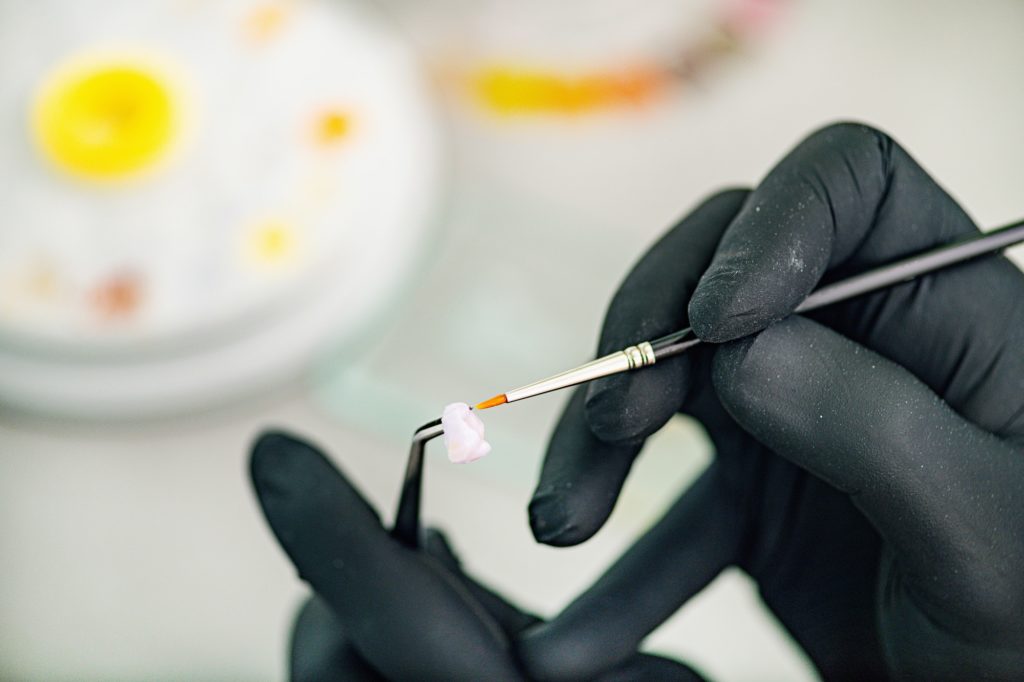Crowns vs. 4-Surface Fillings

Discover more information about crowns and 4-surface fillings as options to treat your cracked, broken, or decayed teeth.
Table of Contents
If your teeth are cracked, have decay, or are broken, you have options to repair them. It’s best to begin with a checkup with your dentist to assess the situation and provide recommendations. Among those recommendations will typically be dental crowns or 4-surface fillings. Before you know the difference or which is best for you, it helps to understand a bit about each option.
What is a Dental Crown?
A dental crown is a tooth-shaped “cap” that is placed over a tooth — to cover the tooth to restore its shape, size, and strength, and improve its appearance. Crowns, when cemented into place, will cover the entire visible part of your tooth above the gum line.
Why is a Dental Crown Needed?
A dental crown may be needed to:
- Protect a weak tooth (decayed or breaking)
- Hold together a cracked tooth
- Cover dental implants
- Make cosmetic modifications
- Restore an already broken tooth
- Cover and support a tooth with a large filling
- Hold a dental bridge in place
- Cover misshaped or badly discolored teeth
What is a 4-Surface Filling?
Four-surface fillings are fillings that cover four of the five tooth surfaces on one tooth. A four-surface filling can contain a mixture of metals including silver, copper, tin, and liquid mercury. Generally, this process takes about an hour depending on the amount of decay that needs to be removed prior to filling.
What is the Difference and Which is Best for Me?
Crowns are best when a large portion of your tooth needs filling. Fillings don’t always protect the tooth over a long period of time, and the goal is to protect the remaining tooth. If a large portion of your tooth needs to be filled, a crown tends to be the better option. In these cases, a filling can act put too much pressure on the tooth and create fractures when you chew.
Now that you’re practically an expert in crowns vs. 4-surface fillings, you’ll want to have a conversation with your dentist and they’ll want to take a look at your teeth. Either option you choose, crowns or 4-surface fillings, you can rest assured your dentist will do what’s best for you and your oral health.
Crowns & 4-Surface Filling FAQs
Whether you need a crown or a 4-surface filling depends on the extent of damage to your tooth. A crown is typically recommended if the tooth has a large cavity or significant structural damage that compromises its strength. Crowns cover the entire tooth and provide protection and support. On the other hand, if the damage is relatively small and limited to one or two surfaces, a 4-surface filling may be sufficient.
Your dentist will assess the situation, considering the size of the decay, the tooth’s location, and your oral health, to make the appropriate recommendation for your specific case.
A crown may be recommended over a 4-surface filling when a tooth has extensive damage, such as a large cavity, fracture, or structural weakness that cannot be adequately address with a filling. Crowns provide greater strength and protection by covering the entire tooth, preventing further deterioration and restoring its functionality.
They are also suitable for teeth with multiple surfaces compromised by damage, ensuring long-term stability and durability. Your dentist will decide based on the extent of the tooth’s damage and the best approach to preserve its health and function.
Dental crowns offer several benefits, including restoring a damaged tooth’s strength, functionality, and appearance. They protect against further decay and damage, reducing the risk of tooth loss. Crowns are versatile and can cover discolored or misshapen teeth, improving overall aesthetics.
Additionally, they can help maintain proper alignment and bite. Overall, dental crowns are a valuable solution for preserving and enhancing the health and appearance of damaged teeth.
